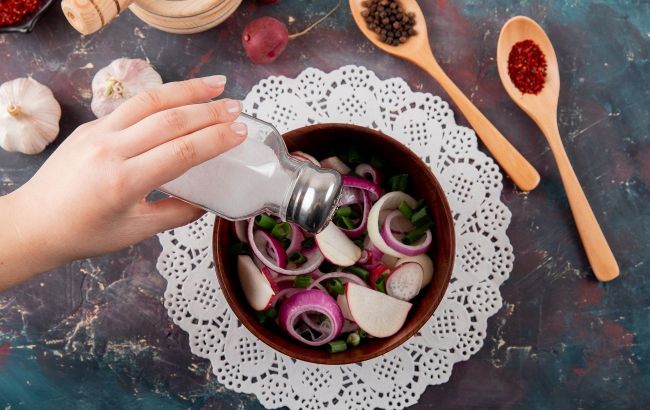How much salt can you eat daily to keep your blood pressure in check
 How much salt is safe for people with high blood pressure (photo: Freepik)
How much salt is safe for people with high blood pressure (photo: Freepik)
Salt is an essential part of our kitchens, adding flavor to many dishes. However, excessive salt consumption has long been linked to high blood pressure and an increased risk of cardiovascular disease. How much salt is actually safe to consume daily to keep blood pressure in a healthy range, explains the World Health Organization.
Why too much salt is dangerous
When we consume too much salt (sodium), the body retains water to dilute the excess sodium. This increases blood volume in the vessels, which in turn raises pressure on the artery walls. Studies show that high salt intake can lead to elevated blood pressure, or hypertension, which is a major risk factor for heart attacks, strokes, and kidney disease.
Recommended daily salt intake
Most health experts, including the World Health Organization (WHO), recommend limiting sodium intake to 2,300 milligrams (mg) per day. This is roughly equivalent to one teaspoon of salt.
For people who already have high blood pressure or are at increased risk of cardiovascular disease, the target should be even lower, around 1,500 mg of sodium per day.
Problem of hidden salt
The main challenge is that most of the sodium we consume doesn't come from the salt we add while cooking. It's "hidden" in processed foods, such as:
- Ready meals and processed foods: instant soups, frozen pizzas, pre-made sauces, sausages, and smoked meats
- Bread and baked goods: even sweet products can contain significant sodium
- Canned foods: vegetables, meats, and pickled products
- Snacks: chips, salted nuts, crackers
- Restaurant meals: dishes prepared in cafés and restaurants often contain much more salt than home-cooked meals
How to reduce salt intake
Read labels
Always check the sodium content on product labels. Choose items marked "low sodium" or "no added salt."
Cook at home
Cooking at home gives you full control over how much salt you add. Use fresh ingredients.
Use salt alternatives
Experiment with herbs, spices, lemon juice, garlic, onions, and pepper to add flavor without excess salt.
Reduce salt gradually
Don’t try to cut out salt all at once. Reduce it gradually. Your taste buds will adapt, and you'll soon enjoy the natural flavor of food.
Avoid processed foods
Limit consumption of sausages, fast food, chips, and other high-sodium products.
Watch for salt in unexpected places
Even sweet cereals or some dairy products can contain sodium.
Rinse canned foods
If you use canned vegetables, rinse them under running water to remove some of the sodium.
This material is for informational purposes only and should not be used for medical diagnosis or self-treatment. Our goal is to provide readers with accurate information about symptoms, causes, and methods of detecting diseases. RBС-Ukraine is not responsible for any diagnoses that readers may make based on materials from the resource. We do not recommend self-treatment and advise consulting a doctor in case of any health concerns.

